#pond ideas
Explore tagged Tumblr posts
Text






#koi pond inspo#koi pond ideas#koi pond design#koi pond#koi fish#indoor pond#indoor koi pond#indoor pond design#pond ideas#pond design#pond#pond indoors#indoor pond ideas#indoor ponds#indoor koi ponds#indoor koi fish#pond inspiration#koi pond Inspiration#indoor koi pond inspo#indoor koi pond designs#indoor koi pond design#indoor koi pond ideas#indoor koi pond idea#indoor home koi pond#home koi pond#koi fish indoors#home ideas#home design#home decor#home & lifestyle
2 notes
·
View notes
Text
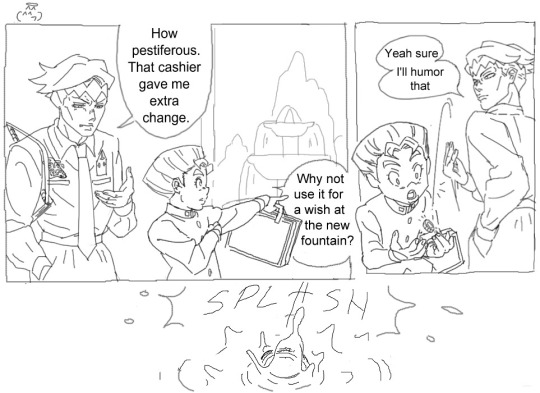

new developments in morioh
#jjba#jjba part 4#jojo's bizarre adventure#diamond is unbreakable#koichi hirose#rohan kishibe#yoshikage kira#tumatawart#Funfact when I first manifested this idea I realized that the town square had a turtle pond so I relocated it#Bc I was not going to have Koichi just recommend that people throw coins into a turtle pond
6K notes
·
View notes
Text

Creating Your Dream Patio Pond
Adding a patio pond to your outdoor space can transform it into a tranquil oasis, bringing the soothing sights and sounds of nature right to your doorstep. Whether you have a sprawling backyard or a cozy balcony, building a patio pond is a rewarding DIY project that enhances the aesthetics and ambiance of your outdoor area. In this guide, we'll walk you through the step-by-step process of creating your own patio pond, from planning and design to maintenance tips for keeping your pond thriving.
Planning Your Patio Pond Design
Before you dive into the construction phase, take some time to plan out the design of your patio pond. Consider the size and shape of your outdoor space, as well as any existing landscaping features. Choose a location that receives adequate sunlight and complements the overall aesthetic of your patio or garden. Additionally, think about the type of pond you want to create – whether it's a formal koi pond, a natural wildlife habitat, or a serene water garden filled with aquatic plants.
Gathering Materials and Supplies
Once you have a clear vision of your patio pond design, it's time to gather the necessary materials and supplies. Here's a basic list of what you'll need:
Pond Liner: Choose a durable, flexible liner that is resistant to punctures and UV degradation. EPDM rubber liners are a popular choice for patio ponds.
Pump and Filtration System: A reliable pump and filtration system are essential for maintaining water quality and circulation in your pond.
Rocks and Gravel: Select natural rocks and gravel to create a naturalistic shoreline and provide habitat for beneficial bacteria and aquatic plants.
Plants: Choose a variety of aquatic plants, such as water lilies, lotus, and water hyacinths, to add beauty and oxygenate the water.
Fish (Optional): If you're interested in keeping fish in your patio pond, consider species that are well-suited to your climate and pond size, such as goldfish or mosquito fish.
Building Your Patio Pond
Now that you have all the necessary materials, it's time to start building your patio pond. Follow these steps:
Excavation: Dig a hole in the desired location for your pond, making sure to create a variety of depths to accommodate different types of plants and wildlife.
Install the Liner: Lay the pond liner in the excavated hole, ensuring that it is smooth and free of wrinkles. Trim any excess liner, leaving a generous overlap around the edges.
Add Rocks and Gravel: Arrange rocks and gravel along the edges of the pond to create a naturalistic border and hide the edges of the liner. Be sure to leave space for planting aquatic vegetation.
Install Pump and Filtration System: Place the pump and filtration system in the deepest part of the pond, following the manufacturer's instructions for installation and setup.
Add Water and Plants: Fill the pond with water and carefully place aquatic plants in their designated areas. Consider adding floating plants to provide shade and shelter for fish.
Cycle the Pond: Allow the pond to cycle for at least a week before adding fish, allowing beneficial bacteria to establish and water parameters to stabilize.
Maintaining Your Patio Pond
Once your patio pond is up and running, it's important to keep up with regular maintenance to ensure its health and beauty. Here are some essential maintenance tasks:
Water Quality: Test the water regularly for pH, ammonia, nitrites, and nitrates, and perform partial water changes as needed to maintain optimal water quality.
Plant Care: Trim and remove dead foliage from aquatic plants, and thin out overgrown plants to prevent overcrowding.
Fish Care: If you have fish in your pond, monitor their health and behavior regularly, and provide appropriate food and shelter.
Pump and Filter Maintenance: Clean and inspect the pump and filtration system regularly to prevent clogs and ensure proper function.
Building a patio pond is a fulfilling project that adds beauty, tranquility, and biodiversity to your outdoor space. By following the steps outlined in this guide and staying on top of maintenance tasks, you can create a stunning water feature that enhances your patio or garden for years to come.
FAQs
Q1: Do I need a permit to build a patio pond? A1: The regulations regarding permits for patio ponds vary depending on your location and the size of the pond. It's best to check with your local government or homeowner's association to determine if any permits are required.
Q2: Can I use tap water to fill my patio pond? A2: Tap water can be used to fill your patio pond, but it may contain chlorine or chloramines, which can be harmful to fish and aquatic plants. Consider treating the water with a dechlorinator before adding it to the pond, or let it sit for 24 hours to allow the chlorine to dissipate.
Q3: How often should I clean my patio pond? A3: The frequency of cleaning your patio pond will depend on factors such as the size of the pond, the number of fish and plants, and the local environment. Generally, you should perform routine maintenance tasks such as removing debris and testing water quality on a weekly or bi-weekly basis, with more thorough cleanings as needed.
1 note
·
View note
Text

guess who I voted for
#miette#polls#tumblr polls#blorbo poll#doodles from a pond#i actually have no idea what most of this cat looks like
16K notes
·
View notes
Text
i feel like it’s so integral to have at least one “at home” episode for every companion. so much character to be revealed in the premise of aliens interfering with everyday life once they are back on earth
#doctor who#dw#dr who#doctor who companions#dw companions#rose tyler#martha jones#donna noble#amy pond#rory williams#clara oswald#bill potts#yazmin khan#graham o'brien#ryan sinclair#and i mean an episode that isn’t their introduction#and not going somewhere else in modern times but where actually live#aliens of london#the lazarus experiment#the sontaran stratagem#the power of three#the caretaker#knock knock#arachnids in the uk#can you hear me?#those are the ones i can name of the top of my head#something about alien hijinks balanced with normal life is so good#ruby sunday hasn’t had hers yet but i have hopes for next season#but you get the idea
223 notes
·
View notes
Text





I remember you. The other day you went to see Vee. What did you say to him? Vee looked really uncomfortable from them on.
#century of love#century of love the series#pond ponlawit#offroad kantapon#daou pittaya#centuryofloveedit#thai bl#thai drama#bl drama#bl series#aejeonghae#in which third doesn't even see vad and only has eyes for vee#red string of fate says no#this gifset idea looked better in my head but ehh#by pharawee
215 notes
·
View notes
Text






Thank you for everything.
WE ARE คือเรารักกัน (2024) PHUM & PEEM + LOVE LANGUAGES (4/5) — ACTS OF SERVICE
#we are#we are the series#pond naravit#phuwin tangsakyuen#phumpeem#pondphuwin#.gif#.we are#.colors#.ppll#ql#// i tried making a gradient#// can you even tell afgklhs#// archer i ended up using your ideas in this set!! thanks again <33
152 notes
·
View notes
Text
More Minecraft ideas, what part of Minecraft needs improvement?
You're wrong, it's ponds.
Ponds, lakes, lava pools. They all suck in Minecraft, they end up just being big holes in the ground with nothing interesting about them that make the landscape ugly and hole ridden
Now you might say “Ivy, literally no one cares” and to that I say, wheesht and accept my ramblings ya donut
So, how do we fix Ponds? It's simply really: make ponds generated structures.
Ponds would now be generated structures taking up one chunk, with an actual human made design to make them, you know, look good. There would be, say, 100 or so different designs to stop them looking to samey (they'd be so small that something like that would be feasible)
Lakes would be done similarly, only with the key difference, they would be made up of 4 chunk “cells”, each making up a corner of the lake.
ponds and lakes in plains or forest biomes would be made of blocks like mud and dirt.
Ponds and lakes in deserts (or oases if you want) would be made up of grass and sand
Ponds and lakes in tundras would be frozen over on the top layer of the water and with clay spawning around the water
Now, let's see some things that can be found in ponds and lakes:
Frogs
Nothing new here, frogs and frogspawn are most common ponds, pond frogs also only come in the green frog varietie.
Perhaps the oasis can have a desert rain frog variant that gives a purple frog light
Toads
Toads and toad spawn can be found in lakes and ponds in forest and plains biomes. Toads emerge from toad spawn in the same way frogs do. Toads have an exaggerated size, being double the size of the frog
Toads come in several colours (Green, Brown, Yellow, Orange and Lime) but these colours do not harbour any game mechanics (in other words: sorry but there are no toadlights)
Toads will eat all mobs with wings, that being the Parrot, Chicken, Phantom, Bat, Bee and the player if they are wearing an elytra, so watch out.
All the aforementioned mobs are scared of Toads, making them and effective deterrent to phantoms in particular
Cattails, Reeds, Rice, Algae and Papyrus
I'll just do all the plant life stuff at once (these will generate dependent on the pond or lake cell)
Algae is a new decorative blocks that can be placed on water
It will connect to other blocks, creating an unbroken surface across the water
Algae has a bright green hue and can be found in both ponds and lakes with the same frequency
Papyrus is a new plant that spawns naturally in the oasis, it is used as a more efficient way of making paper as it can be bonemealed and only one papyrus is needed to make paper
Rice is a plant that grows in water in lakes and ponds spawning in cherry groves.
Rice can be used in two recipes:
Rice Bowls:Putting rice, a bowl and any meat together will craft a rice bowl
This food source that can be eaten twice, eating the meat and then the rice
Sushi: putting rice, dried kelp and one fish into a crafting table creates Sushi, a foodsoarch that can be eaten instantly without playing the eating animation, not very nutritious but good in a pinch

Cattails are a purely decorative plant found in ponds and swamps
Reeds are more common around rivers and lakes, being a fern like plant that grows two tall.
Reeds can be used to craft a new item: Pan Pipes
Combining 3 reeds and 3 string will create pan pipes, these can be played to draw passive mobs towards you so long as the button to play them is held down.
Pan Pipes can also calm neutral mobs like wolves, iron golems and bees, but doing this instantly focus the Pan pipes into cool down
Pan pipes have a cool down double that of the Goat Horn
Bagpipes
By putting Pan Pipes, 3 iron nuggets, 3 red wool and 3 green wool together you can make Bagpipes.
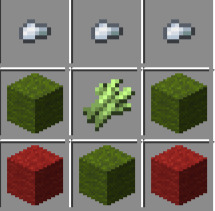
Bagpipes have durability on top of having the same level of cool down as Pan Pipes. Bagpipes cannot be enchanted.
Bagpipes have the ability to PERMANENTLY pacify all hostile mobs in the chunk the player is in.
Bagpipes will break after 10 or so uses
Willow and Palm
Willow and palm are new wood types, Willow spawns around lakes and ponds and Palm spawns around oases.
Willow has a dark Bluish-green colour, complementing mangrove, where as Palm is a desaturated pale white
(These will generate depending on the pond or lake cell)
(Part 1/3)
310 notes
·
View notes
Text













PondSand Scenes because I love them (23 ¦ ??)
S: "If you're sleepy, go to bed. You've been working all day. You must be so tired." P: "I'm tired but I want to be with you. I miss you." S: "What do you mean you miss me? We've been together all day." P: "I miss you all the time." S: "Alright, up to you then. If you're sleepy, you can take a nap here. Once I'm done studying, I'll wake you up. Then we can go to sleep in the bedroom." P: "Okay." ... S: "Oh, you're really sleeping." ... S: "You startled me. Go to sleep. I can't focus right now."
#perfect 10 liners#p10l pond#p10l sand#pondsand#pondsandgifs#perfect 10 liners the series#marc natarit#poon mitpakdee#marcpoon#gifs#thai drama#tusersilence#tusernix#tuserrowan#khaotunq#userdragonz#tuserhidden#userlinnea#uservid#usermask#userjamiec#tusermona#userspicy#userlovevivi#useralien#melontrack#fyeahthaidramas#asianlgbtqdramas#i love them so much you have no idea
69 notes
·
View notes
Text
It has dawned on me that its rather ironic that the first time i listened to malevolent i was digging a hole
#I LISTENED TO THE FALLING DOWN HOLES PODCAST WHILE IN A HOLE#AND I ONLY JUST REALISED THIS#that hole took the majority of season 1 to dig#Oh me last year you had no idea what you were going to become#malevolent arthur#malevolent#malevolent podcast#john doe malevolent#malevolent pod#spine speaks#For context i was digging a new pond for my mum since her old one sprung a leak
119 notes
·
View notes
Text

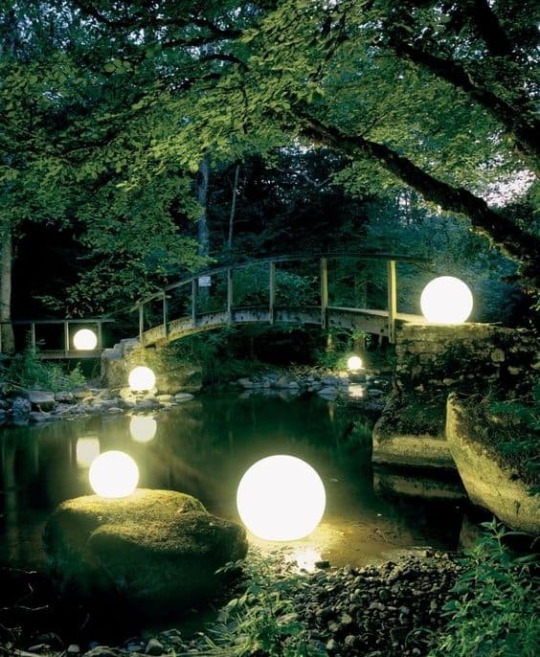

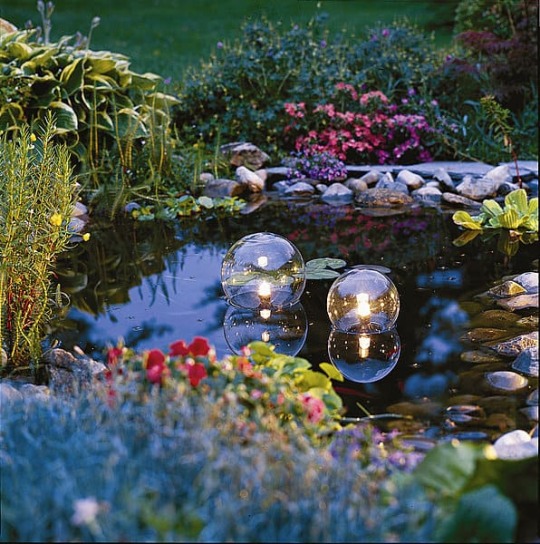


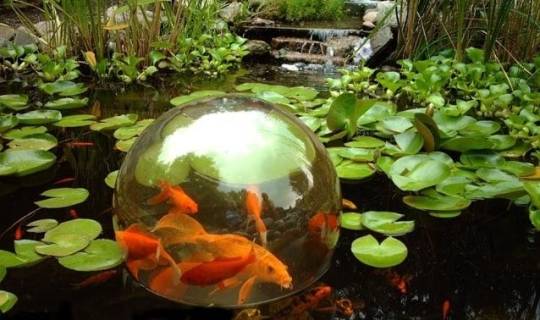


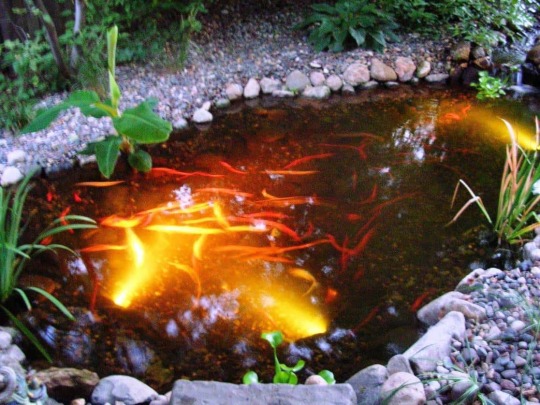
#koi pond#backyard pond#pond#pond design#koi pond design#back yard design#pond ideas#koi pond ideas#koi pond inspo#backyard design#backyard decor#backyard#backyard seating#backyard table#home design#home decor#home ideas#home & lifestyle#home decoartion#home decorating#home design ideas#home inspo#homestyle#outdoor garden#outdoor pond#outdoor koi pond#pond waterfall#waterfall#waterfall ideas#waterfall inspo
0 notes
Text

The Ultimate Guide to Adding a Waterfall
Considering adding a waterfall to your backyard? You're not alone. Many homeowners find the idea of incorporating a cascading water feature into their outdoor space appealing. However, before you dive into this project, it's essential to weigh the benefits and considerations. In this comprehensive guide, we'll explore everything you need to know about adding a waterfall to your backyard oasis.
Exploring the Benefits
Adding a waterfall to your backyard offers a myriad of benefits beyond mere aesthetics. Let's delve into some of the key advantages:
1. Aesthetic Appeal
Bold landscaping statements can transform your backyard into a serene retreat. A well-designed waterfall adds a touch of natural beauty and tranquility, creating a captivating focal point for your outdoor space.
2. Relaxation and Stress Relief
The soothing sound of flowing water has a remarkable ability to promote relaxation and reduce stress levels. Incorporating a waterfall into your backyard provides a serene ambiance, perfect for unwinding after a long day.
3. Habitat Enhancement
Waterfalls attract various wildlife, from birds to butterflies, enriching your backyard ecosystem. Watching birds bathe and drink from your waterfall can bring a sense of harmony and connection with nature.
Considerations Before Installation
While the allure of a backyard waterfall is undeniable, it's crucial to consider several factors before breaking ground:
1. Space and Terrain
Evaluate the available space in your backyard and consider the terrain. Waterfalls typically require a slope or elevation to achieve the desired cascading effect. Additionally, ensure there's ample room for excavation and landscaping around the waterfall feature.
2. Budget and Maintenance
Installing a waterfall involves upfront costs for materials, labor, and ongoing maintenance. Factor in expenses for pumps, filters, lighting, and water treatment systems. Additionally, consider the time and effort required to maintain your waterfall regularly.
3. Local Regulations and Permits
Before commencing any construction, check local regulations and obtain necessary permits. Some areas may have restrictions on water usage, noise levels, or alterations to natural landscapes. Ensure compliance with municipal guidelines to avoid potential fines or legal issues.
Installation Process
Once you've assessed the benefits and considerations, it's time to embark on the installation process. Here's a simplified overview of the steps involved:
1. Design and Planning
Work with a professional landscaper or designer to create a customized waterfall design tailored to your backyard space and preferences. Consider factors such as size, shape, materials, and landscaping elements.
2. Excavation and Preparation
Prepare the site by excavating the area for the waterfall feature. Create a sturdy foundation using gravel or concrete to support the structure. Install any necessary plumbing or electrical components during this phase.
3. Construction and Installation
Construct the waterfall using natural stone, boulders, or pre-formed waterfall kits. Position rocks strategically to create a visually appealing cascade, ensuring proper water flow and distribution. Install pumps, filters, and lighting as per the design specifications.
4. Landscaping and Finishing Touches
Complete the project by landscaping around the waterfall with plants, rocks, and mulch to blend seamlessly with the surrounding environment. Add decorative elements such as seating areas, pathways, or ponds to enhance the overall aesthetic.
Adding a waterfall to your backyard can elevate its beauty and functionality, providing a serene oasis for relaxation and enjoyment. By carefully considering the benefits, considerations, and installation process, you can create a stunning water feature that enhances your outdoor living space for years to come.
FAQs
Q1: How much does it cost to install a backyard waterfall? A1: The cost of installing a backyard waterfall varies depending on factors such as size, materials, and complexity. On average, homeowners can expect to invest anywhere from $5,000 to $20,000 or more for a professionally designed and installed waterfall.
Q2: Do I need a professional landscaper to install a backyard waterfall? A2: While some homeowners may opt for a DIY approach, hiring a professional landscaper or contractor with experience in water feature installation is advisable. They can ensure proper design, construction, and functionality, minimizing potential issues and maximizing aesthetic appeal.
Q3: How much maintenance does a backyard waterfall require? A3: Maintenance requirements for a backyard waterfall typically include regular cleaning, debris removal, and occasional servicing of pumps and filters. Plan to dedicate time for ongoing upkeep to preserve the beauty and functionality of your waterfall feature.
0 notes
Text

All the growing things and you by my side

We are just little transparent fellows! (decided to include this too eheheh)
#the hobbit#bilbo baggins#bagginshield#thorin oakenshield#my art#original background from the pond in my backyard garden#there's this lil nook with plants growing that spawned me this idea lololol
686 notes
·
View notes
Text
Ah yes december time to spend all of my time daydreaming about holiday themed dates despite being single
#wlw#wlw mood#sapphic#sapphism#lesbian#😪😪😪#at least i’ll have a really large collection of ideas for if i ever DO date someone ig#gonna be soooo romantic……..just as soon as someone wants me to#lol#also just hyped myself up for this tiny little meeting was SO ready to crush it#and then my mic#Did Not Work#🥲#so time to change my name and leave the country ig#maybe my beautiful holiday gf is just across the pond and will love me even though i have to change my name to jessithryn😔#jk jk it’s all good i survived and will be stronger from this experience💪#…..🥲#im gay and i like sleeping
57 notes
·
View notes
Text

cookin up a season 10 design for this etho guy or somethin or other
inspired by his base vibes and redstone techy-ness :D also netherite slides because its infinitely amusing to me
#ethoslab#etho fanart#ethoslab fanart#mcyt fanart#mcyt#hermitblr#hermitcraft#hermitcraft fanart#lafakiwi draws#gkm arts#character design#ive teased this design in so many of my ethubs drawings im like fuck it full ref finally xD#i can give a more in depth into the thoughts that led to my design choice but most notably-#frog on the back bc frogger; the pattern at the bottom of his vest is meant to be like abstract lilypad pond#and i moved the canada flag on his arm to the obi via the maple leaves bc i didnt like the flag there#the only time his hair is down is when hes shreepin bc speakin from experience sleepin with w ponytail is not comfy at all#I also like the idea if he's workin in private (like on redstone) the mask is half on/half off depending if other hermits are around#also like. just how dusty it is i dont know if he would be good about redstone ppe#around the nho peeps his mask is mostly down. esp w bdubs :3#used the tags to ramble but this'll make it out of containment eventually#mcytblr#artists on tumblr#hermitcraft season 10#hermitcraft s10
109 notes
·
View notes
Text

reuploading from yesterday since i didnt like how it looked and i had to do some tweaks, but heres my toy besties seam and pupet 🧵🪡
also by "tweaks" i mean annihilating poor Stitch from the picture since i wasnt happy with how he turned out but here they all are individually



#my art#i like stitch a lot as a character but he always gets the short end of the stick when im drawing him#something about his face#ive been debating the idea of renaming stitch and seam twill and satin respectively#because the series is called stitch in the ditch for the sewing technique but stitch is also a character#its like if 'sonic adventure' was called 'sonic floating facedown in a drainage pond'#since not only is stitch in the title but also he is- and this is imparative#in a ditch somewhere
64 notes
·
View notes